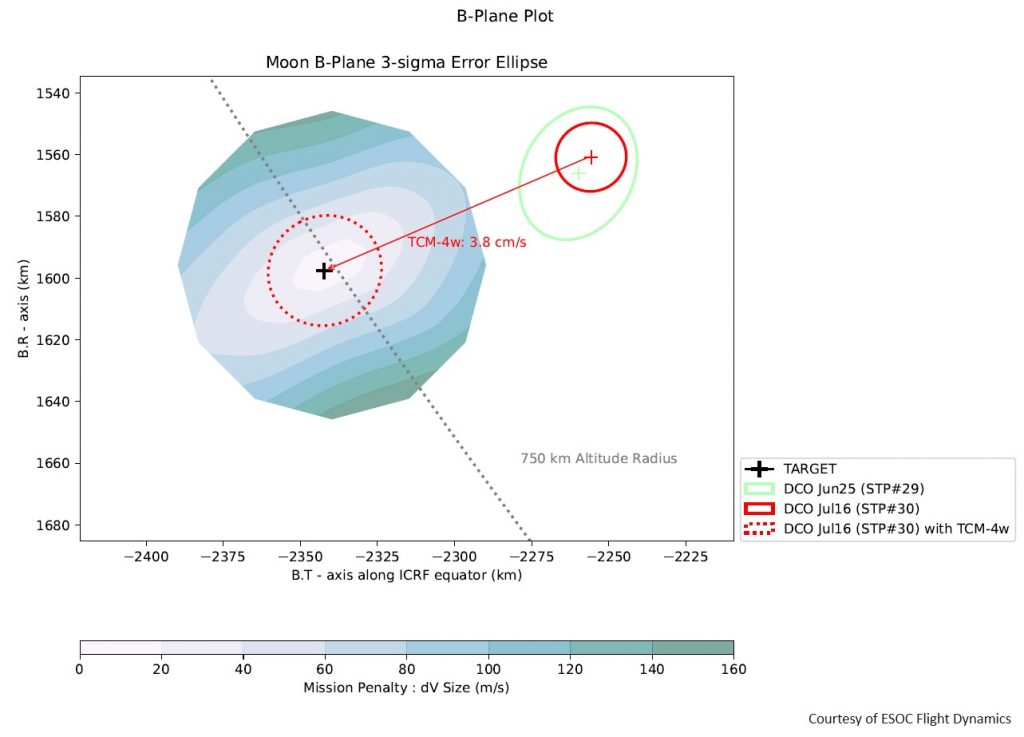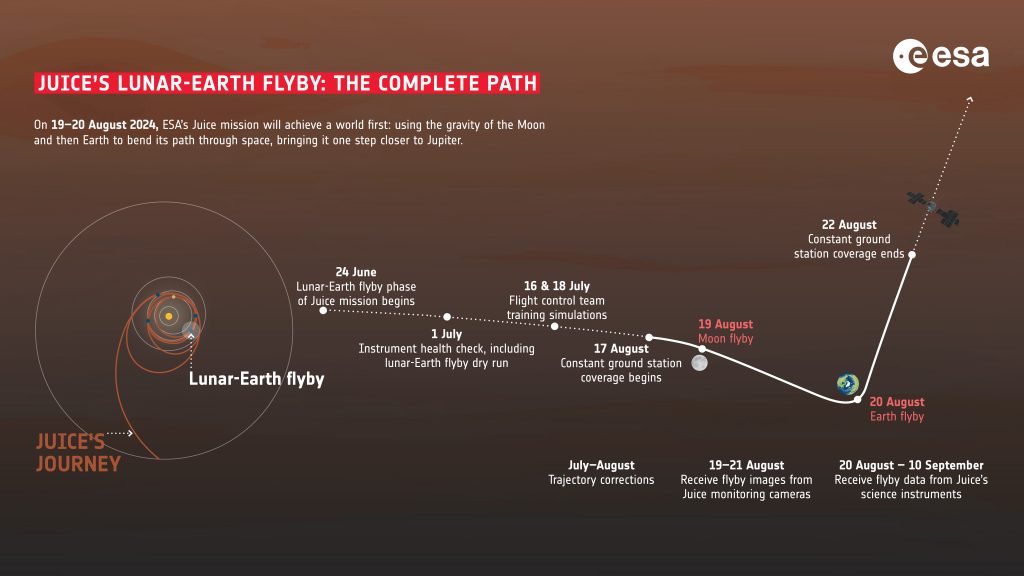Yesterday, ESA’s Juice spacecraft carried out the first of up to four ‘trajectory correction manoeuvres’ that will line it up for next month’s double lunar-Earth flyby.
Juice’s manoeuvring thrusters fired for approximately 31 seconds, with the goal of altering the spacecraft’s velocity by 3.8 cm/s. The manoeuvre appears to have been successful, but ESA’s Flight Dynamics teams will spend the next few days carrying out a full analysis of Juice’s new trajectory. Their results will determine whether the spacecraft needs to use the next opportunity to fine tune its approach on 5 August.
Using a little fuel now can save a lot of fuel later. If Juice doesn’t arrive at the Earth-Moon system at the right angle and speed for the double flyby, it will leave the system heading in the wrong direction for the next phase of its journey to Jupiter. Getting the spacecraft back on track at this point would require far more fuel than the amount used now to optimise its arrival.
Fuel is the ultimate constraint for a mission like Juice. Fuel reserves will determine what science Juice can perform at Jupiter and Ganymede and for how long. The success of the lunar-Earth flyby will be measured by how much fuel Juice needs to burn over the next 12 months to arrive at Venus for its next flyby in August 2025.
Find out more about how we are preparing for Juice’s lunar-Earth flyby.

This graphical representation of Juice’s trajectory is used by ESA’s Flight Dynamics experts to line Juice up to pass the Moon at the correct altitude and angle on 19 August 2024.
Before executing this week’s manoeuvre, Juice’s trajectory was inside the solid red circle. It is now in the dotted red circle, with experts currently evaluating exactly where. Hitting this ‘bullseye’ will ensure that the spacecraft leaves the Earth-Moon system on a trajectory that takes it towards Venus with minimal need for future adjustments.
This week’s correction manoeuvre cost Juice the amount of fuel needed to change the spacecraft’s velocity by 3.8 cm/s. The coloured regions show that the same correction would ‘cost’ more than 100 m/s if it were carried out after the lunar-Earth flyby. Small corrections now save lots of fuel later.


Discussion: 9 comments
Will JUICE be observable during flyby? What magnitude will it reach??
Hello! We replied over on X, but for anyone else with the same question, this is the region that Juice will pass over while at its closest to Earth: https://www.esa.int/ESA_Multimedia/Images/2024/07/Juice_s_path_over_Earth_during_the_August_2024_lunar-Earth_flyby
I am no customer of X and don’t have universal access to X, thus, please make sure that every information you post on X is also available on freely available channels, thanks!
It seems JUICE is already visible in telescope.
Keep an eye on this blog, we’re planning a post showing some ground-based observations of Juice 😉
There was a big main engine burn on Nov 17 that was reported on; there was meant to be a smaller burn ‘some weeks later’ but I haven’t seen any info on it – can you tell us about that burn? (date/time, dV). Were the any other burns between then and this one? Thanks!
Yes, we often split large manoeuvres like that into two parts. That way, we can use the second, smaller manoeuvre to iron out any errors from the first.
The second, smaller burn was carried out smoothly on 1 December, altering the spacecraft’s by 10 m/s
We then carried out another deep space manoeuvre on 19 April 2024, altering Juice’s velocity by 0.7 m/s.
Are you sure that is only 3,8 cm/sec instead of 3,8 km/sec?
Yes, tiny corrections now save lots of fuel later.